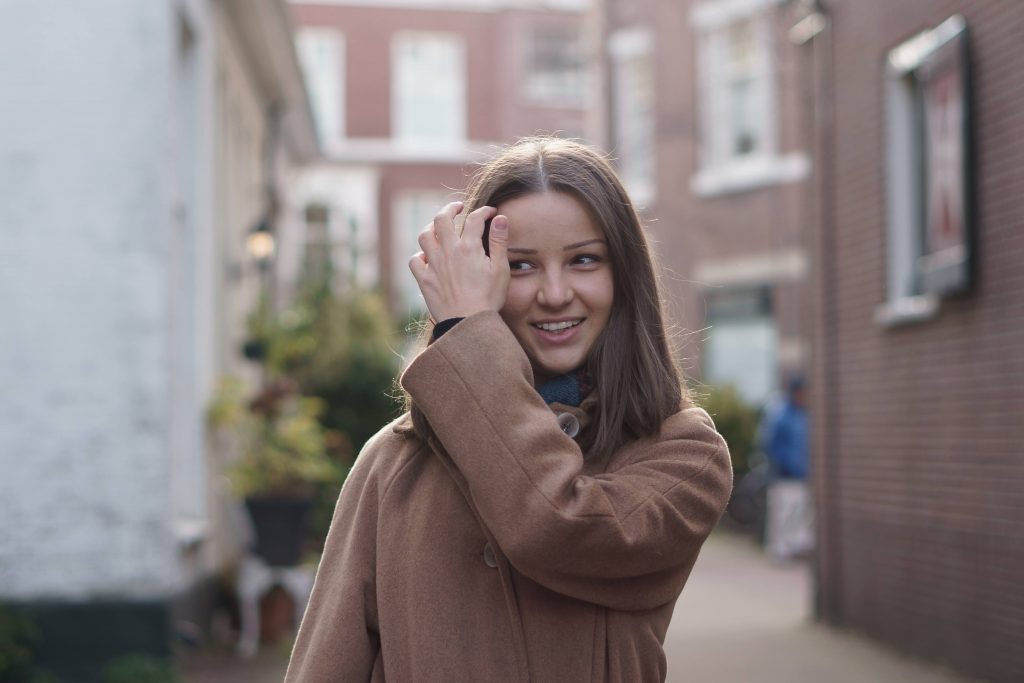‘Sustainability is THE challenge of our time’
‘Coming to The Netherlands to start my studies was the game changer for me; I started for the first time to really consider the way we treat the planet and how we can move forward more sustainably.’ So says Mari, 22 years old and the sixth to take the floor in this series of The Hague Sustainability Stories.


Could you please shortly introduce yourself?
‘My name is Mari. I am 22 years old and I have been living in The Hague for three years now. In 2017, I moved from Bulgaria to here to start my Bachelor degree in Industrial Design at The Hague University of Applied Sciences.’
When did you first hear about sustainability?
‘I think I first heard about it through a friend of my mum who was living and working in Germany as a doctor. She was very involved in it, and I remember hearing her talk about sustainability when I was young. But the topic didn’t really click yet. Coming to The Netherlands to start my studies was the game changer for me. In the first year of my studies, I already realized: this is something and I’m part of it. In class, we talked about it and the course biomimicry – looking at strategies found in nature to solve human design challenges – really clicked. And what came as a shock when going home, is seeing the streets of The Hague full of plastic and thrash. This felt very contradictory to me: people here are so conscious and yet it seems they are not doing anything about it.’
Waste is something that worries you?
‘Yes, I think about a lot of waste. Food waste, waste on the streets and at the moment all the waste that comes with the COVID crisis. Before the crisis, the European Union announced the ban on selected single-use products made of plastic, but at the moment people are encourages to use these kinds of products like straws and cups because of COVID. So I am not sure how this ban works right now. In that sense, recycling is very important.
Just the other day, I saw a father with his son on one of these big cargo bikes that was full of paper and glass. The father was telling his son: ‘Let’s go recycle!’ This is what all of us should be doing including myself! I have to admit that I really want to recycle, but I don’t do it. This is because the nearest recycling station to my house is 10 minutes away by bicycle. I think that municipalities also have a role to play in providing people with more ways to be sustainable: to recycle, to buy less, or to buy sustainable products.’
Next to recycling, what role do you see for yourself in being part of the solution?
‘Through my studies, I found out that as a designer there are millions of ways that I can contribute to solving the problem. Unfortunately, sometimes designers are not very environmentally conscious because they are so caught up in creating the most beautiful product or the most advanced one, that they forget the consequences. We as designers should be more attentive to what we take from nature (materials) and what we put back (waste). Working on design projects and researching companies, I realized that even companies that try to be green and produce recyclable products or sustainable ones, still do things like using a lot of energy, wrapping their products in plastic, or companies choose to let their products be developed in China, for cost efficiency, implying also shipping and carbon emissions stemming from this choice.
I feel that the only way to change this, is to be very conscious of what we buy as consumers and realizing more and more the costs that a product has on the environment. In the future, I hope to work for a company that attempts to be sustainable and gets this message across to others in the same sector and to their clients. A company that tries to contribute to solving the problem.’
And is there something you do as a consumer in your everyday life?
‘I try to buy less plastic products, less clothes, avoid plastic bags and to stop eating meat. Because meat is a great polluter as forests are cut down (to create fields?) and cattle needs a lot of water and food. I am very conscious about it, even though in my culture we eat it a lot. This also makes it difficult to talk about this topic with my family.’
As waste and food are topics you relate to, how do you act upon these topics in daily life?
‘Before I go grocery shopping, I always make a plan for the week of what I am going to cook. And then I go and buy specific things. Me and my boyfriend make sure to use all the food that can go bad so that we don’t have to throw anything away at the end of the week. The only challenge we have is the bread. It always gets moldy, so we started putting it in the fridge which helps a little bit.
And if we have food left in the fridge at the end of the week that can go bad, we have something in Bulgaria called “Guvdje” that translates into ‘put everything in your fridge into it’. My mom taught me this recipe: you chop everything, put it into a big bowl and then it goes into the oven for 20 to 30 minutes. And when it’s almost done, you can also break an egg on top of it. And no matter what we put in it, it’s always delicious!’
As you are giving an inspiring example, where do you find inspiration?
‘I spend a lot of time on Instagram. I think that is something that we all do. And I follow a lot of sustainability accounts like Greta Thunberg, The Zero Waste Guide and Waste-Ed. These accounts provide me with advice on how to be sustainable and give super simple tips and tricks of what you can do yourself. For instance, stop using liquid soap and start using solid soap bars or how to store food. And what to do with food waste as you can use the skin of an apple or the skin of an avocado for other purposes. This is what keeps me active and keeps reminding me about the urgency of the topic, because I always see it on my Instagram feed.’
What is a recent post on Instagram you would like to share with us as a take away?
‘Lewis Hamilton, Formula 1 driver, recently posted the picture of a new digital clock on Union Square in New York. This big clock shows how many years, days and minutes we have until we reach the point we cannot solve the climate change anymore and where we will enter catastrophic times. As a young woman who wants to have children, this post really made me question my future and how much time we have left. If you really look at that clock, and let it sink in, it confronts you that this is THE challenge of this time.’
